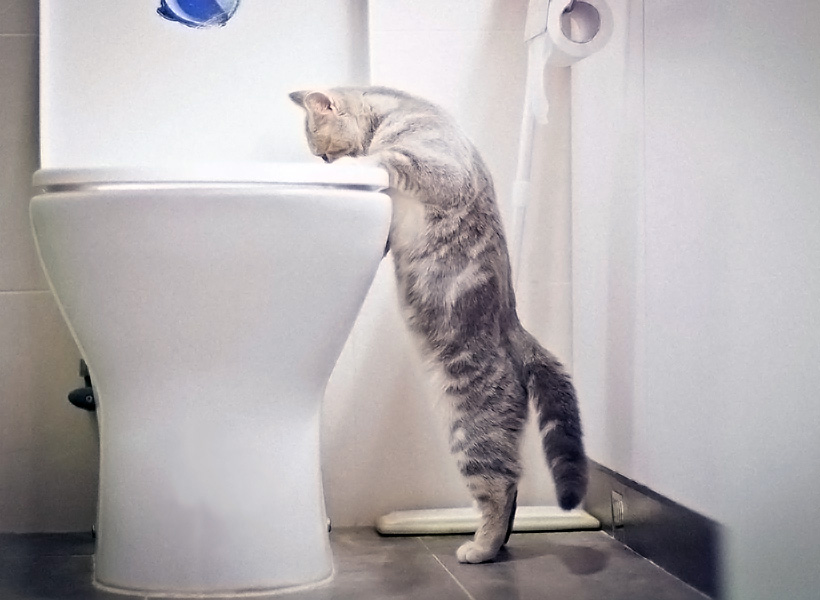Reasons Flushing Cat Poop Down Your Toilet Isn't a Good Idea - Advice for Proper Disposal
Reasons Flushing Cat Poop Down Your Toilet Isn't a Good Idea - Advice for Proper Disposal
Blog Article
They are making a few great points on the subject of Don’t flush cat feces down the toilet overall in the content following next.

Intro
As pet cat proprietors, it's vital to be mindful of just how we get rid of our feline buddies' waste. While it might appear convenient to flush cat poop down the bathroom, this method can have damaging effects for both the setting and human health.
Alternatives to Flushing
Fortunately, there are safer and more responsible methods to throw away pet cat poop. Consider the complying with alternatives:
1. Scoop and Dispose in Trash
The most common method of getting rid of pet cat poop is to scoop it right into an eco-friendly bag and toss it in the trash. Be sure to use a dedicated litter scoop and deal with the waste immediately.
2. Use Biodegradable Litter
Select naturally degradable feline trash made from products such as corn or wheat. These clutters are environmentally friendly and can be securely dealt with in the trash.
3. Bury in the Yard
If you have a yard, consider burying feline waste in a designated area far from veggie yards and water resources. Be sure to dig deep enough to stop contamination of groundwater.
4. Set Up a Pet Waste Disposal System
Purchase an animal waste disposal system specifically made for pet cat waste. These systems use enzymes to break down the waste, minimizing odor and environmental effect.
Wellness Risks
Along with environmental issues, purging pet cat waste can likewise pose health risks to human beings. Feline feces may have Toxoplasma gondii, a bloodsucker that can trigger toxoplasmosis-- a potentially extreme health problem, particularly for pregnant females and individuals with damaged immune systems.
Ecological Impact
Flushing pet cat poop introduces harmful virus and bloodsuckers into the water supply, presenting a significant danger to aquatic environments. These impurities can negatively impact aquatic life and compromise water top quality.
Conclusion
Liable animal possession prolongs past offering food and sanctuary-- it also includes correct waste administration. By refraining from purging cat poop down the commode and choosing different disposal methods, we can reduce our ecological footprint and secure human health and wellness.
Why Can’t I Flush Cat Poop?
It Spreads a Parasite
Cats are frequently infected with a parasite called toxoplasma gondii. The parasite causes an infection called toxoplasmosis. It is usually harmless to cats. The parasite only uses cat poop as a host for its eggs. Otherwise, the cat’s immune system usually keeps the infection at low enough levels to maintain its own health. But it does not stop the develop of eggs. These eggs are tiny and surprisingly tough. They may survive for a year before they begin to grow. But that’s the problem.
Our wastewater system is not designed to deal with toxoplasmosis eggs. Instead, most eggs will flush from your toilet into sewers and wastewater management plants. After the sewage is treated for many other harmful things in it, it is typically released into local rivers, lakes, or oceans. Here, the toxoplasmosis eggs can find new hosts, including starfish, crabs, otters, and many other wildlife. For many, this is a significant risk to their health. Toxoplasmosis can also end up infecting water sources that are important for agriculture, which means our deer, pigs, and sheep can get infected too.
Is There Risk to Humans?
There can be a risk to human life from flushing cat poop down the toilet. If you do so, the parasites from your cat’s poop can end up in shellfish, game animals, or livestock. If this meat is then served raw or undercooked, the people who eat it can get sick.
In fact, according to the CDC, 40 million people in the United States are infected with toxoplasma gondii. They get it from exposure to infected seafood, or from some kind of cat poop contamination, like drinking from a stream that is contaminated or touching anything that has come into contact with cat poop. That includes just cleaning a cat litter box.
Most people who get infected with these parasites will not develop any symptoms. However, for pregnant women or for those with compromised immune systems, the parasite can cause severe health problems.
How to Handle Cat Poop
The best way to handle cat poop is actually to clean the box more often. The eggs that the parasite sheds will not become active until one to five days after the cat poops. That means that if you clean daily, you’re much less likely to come into direct contact with infectious eggs.
That said, always dispose of cat poop in the garbage and not down the toilet. Wash your hands before and after you clean the litter box, and bring the bag of poop right outside to your garbage bins.
https://trenchlesssolutionsusa.com/why-cant-i-flush-cat-poop/

I found that review on How to Dispose of Cat Poop and Litter Without Plastic Bags while scouting around the web. Kindly take a moment to distribute this blog post if you liked it. Thanks a lot for your time. Visit again soon.
Call Today Report this page